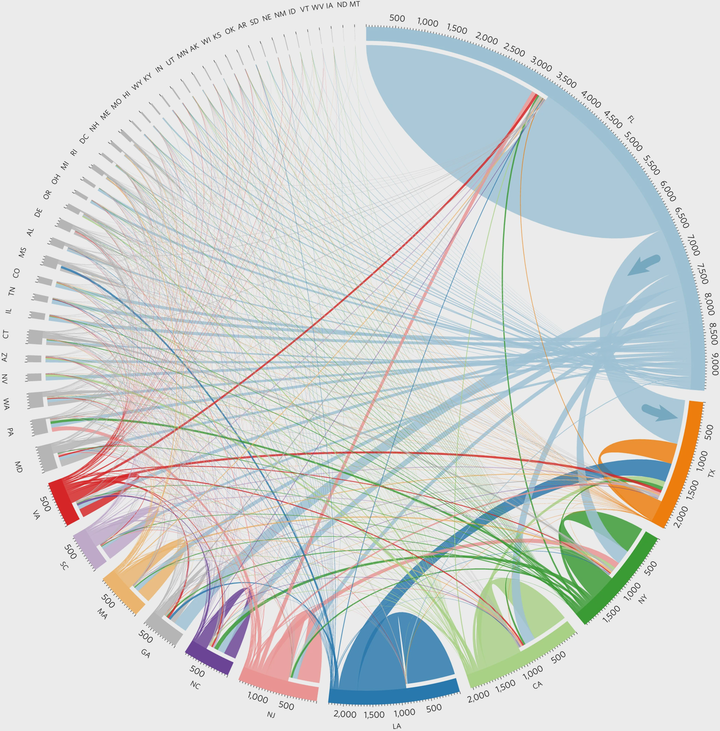
Abstract
Many sea-level rise (SLR) assessments focus on populations presently inhabiting vulnerable coastal communities1,2,3, but to date no studies have attempted to model the destinations of these potentially displaced persons. With millions of potential future migrants in heavily populated coastal communities, SLR scholarship focusing solely on coastal communities characterizes SLR as primarily a coastal issue, obscuring the potential impacts in landlocked communities created by SLR-induced displacement. Here I address this issue by merging projected populations at risk of SLR1 with migration systems simulations to project future destinations of SLR migrants in the United States. I find that unmitigated SLR is expected to reshape the US population distribution, potentially stressing landlocked areas unprepared to accommodate this wave of coastal migrants—even after accounting for potential adaptation. These results provide the first glimpse of how climate change will reshape future population distributions and establish a new foundation for modelling potential migration destinations from climate stressors in an era of global environmental change.